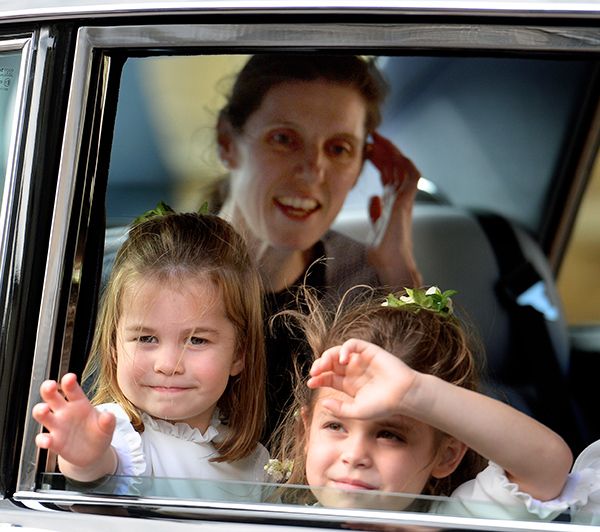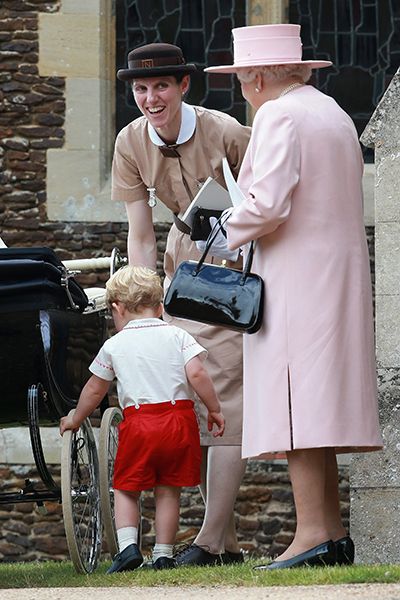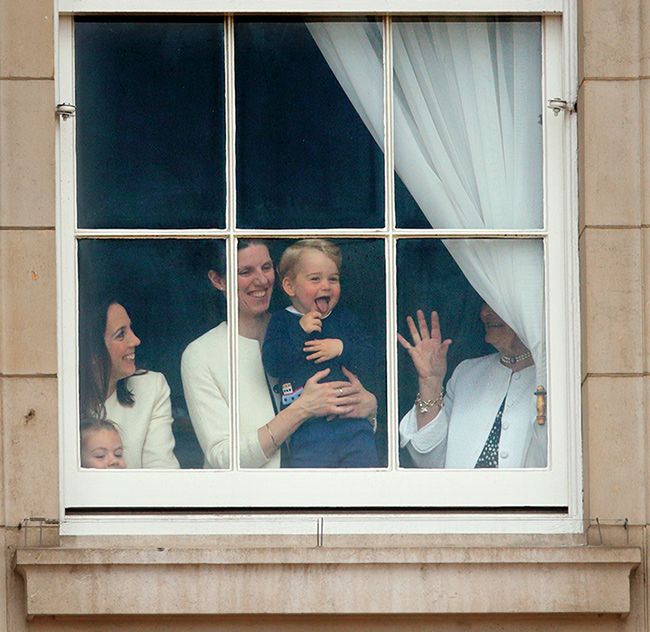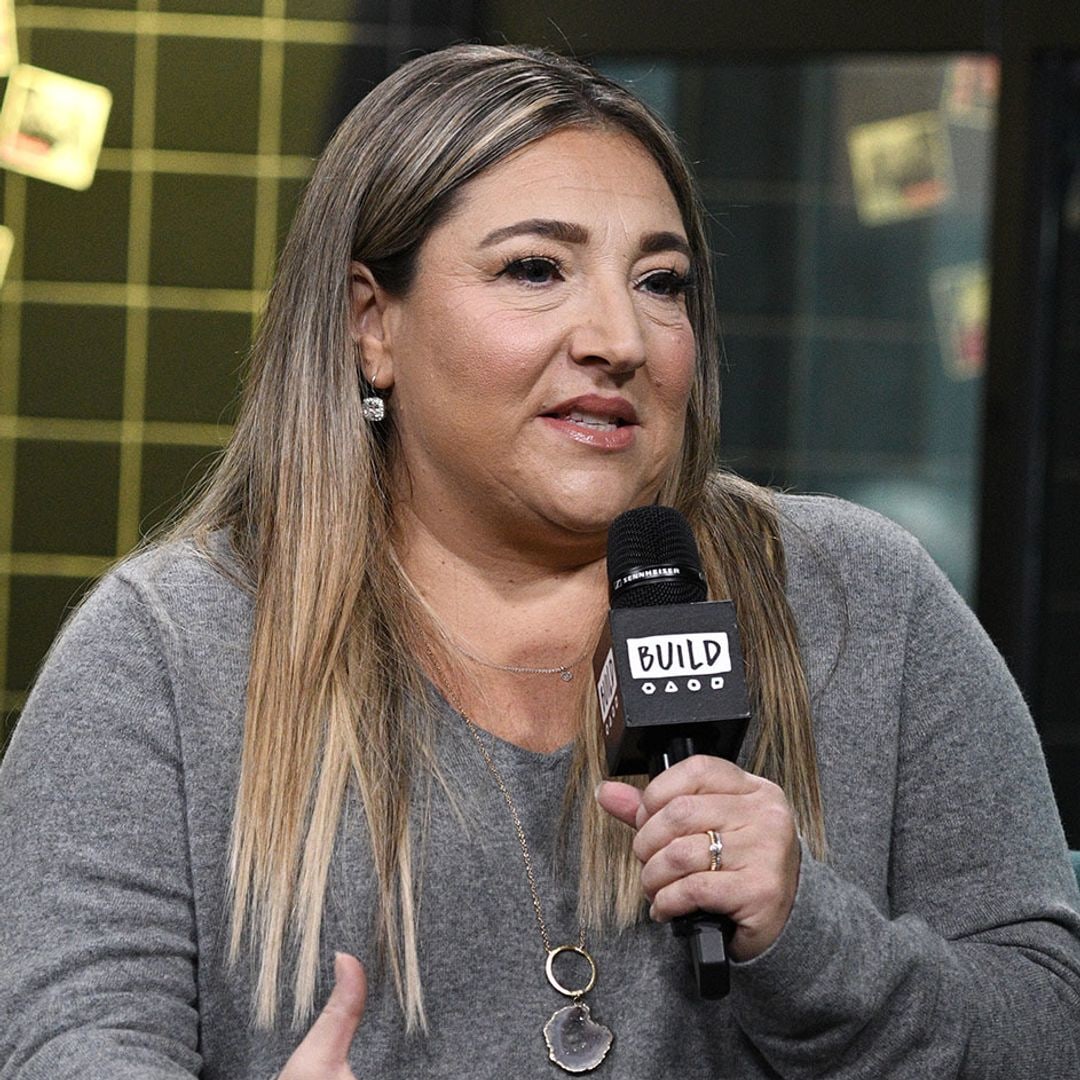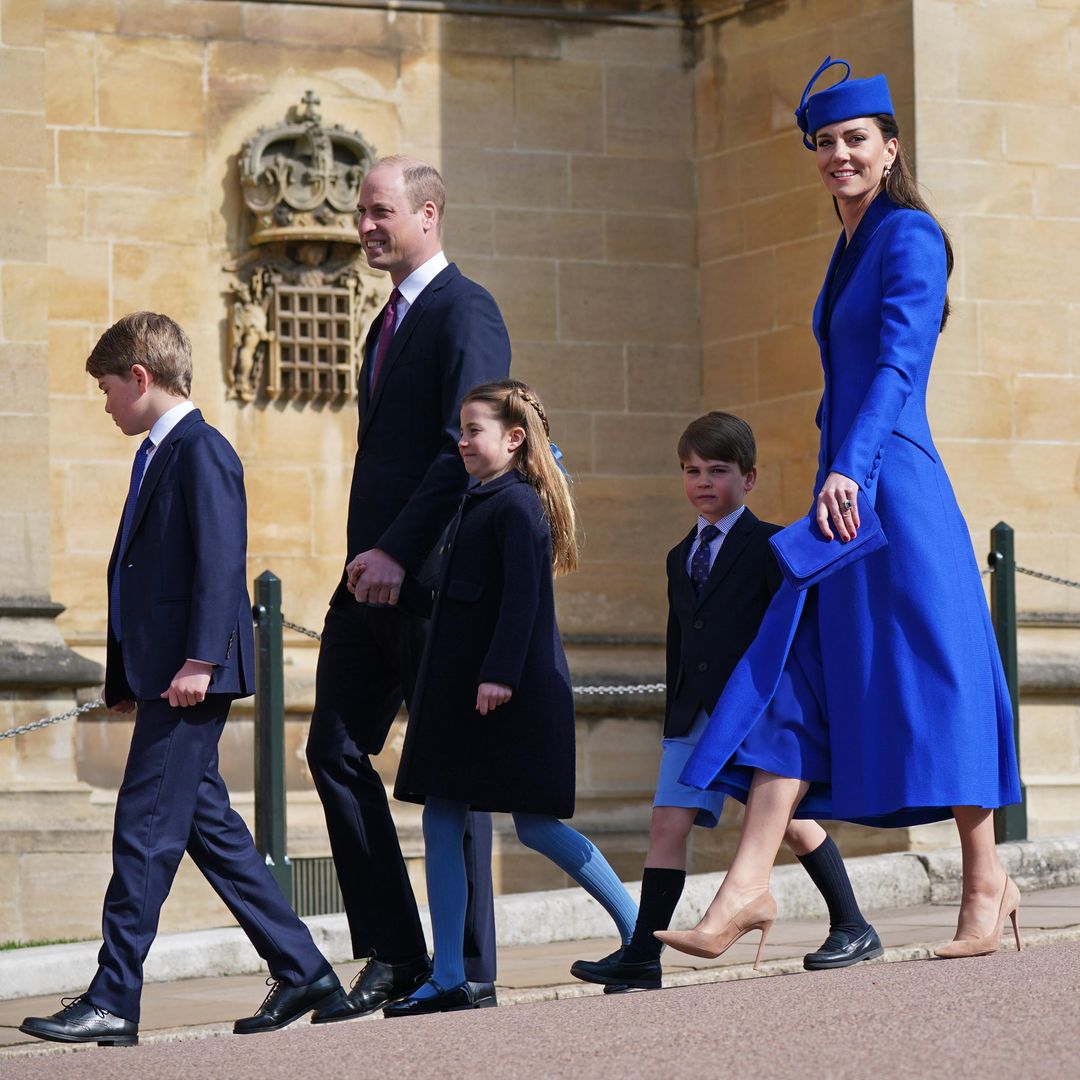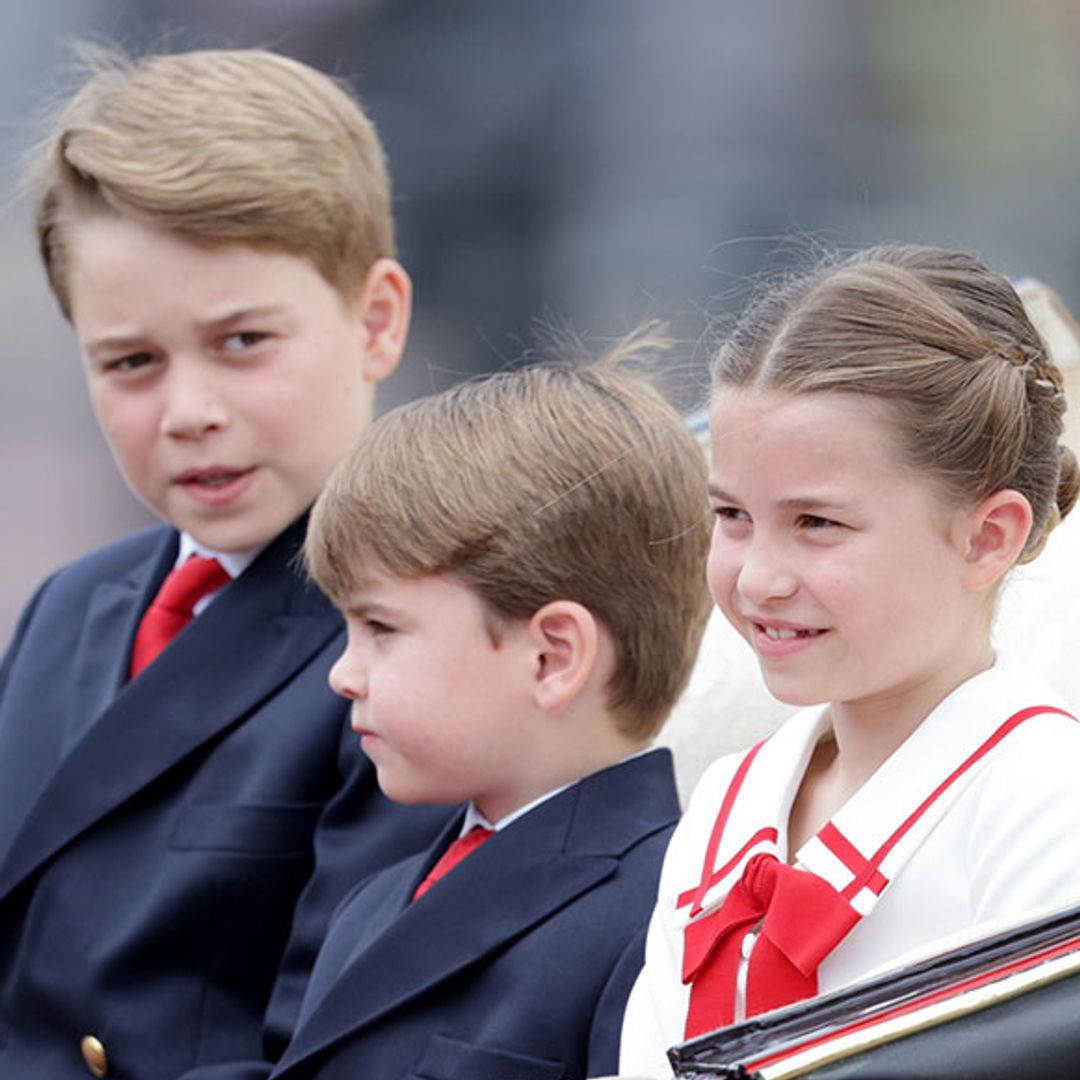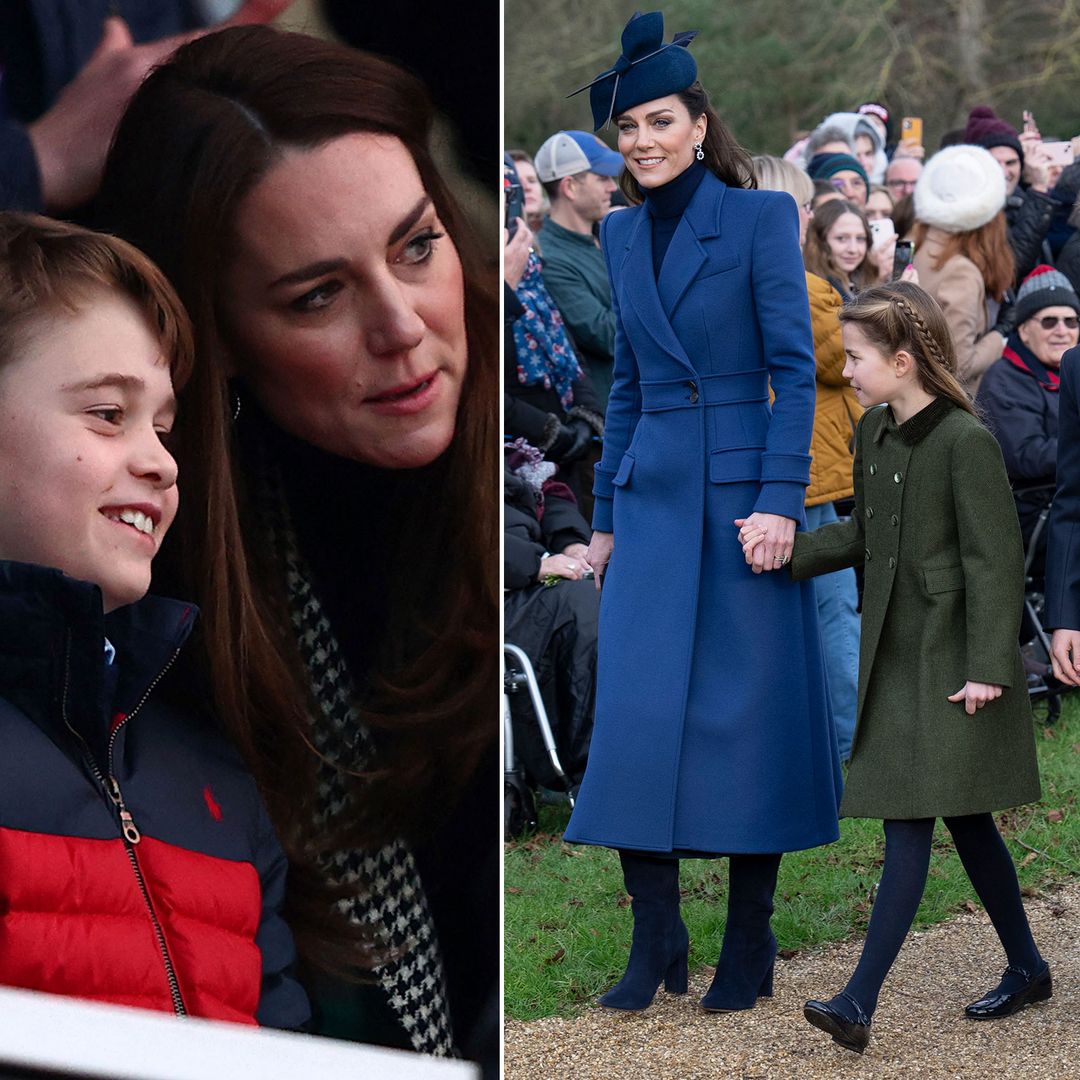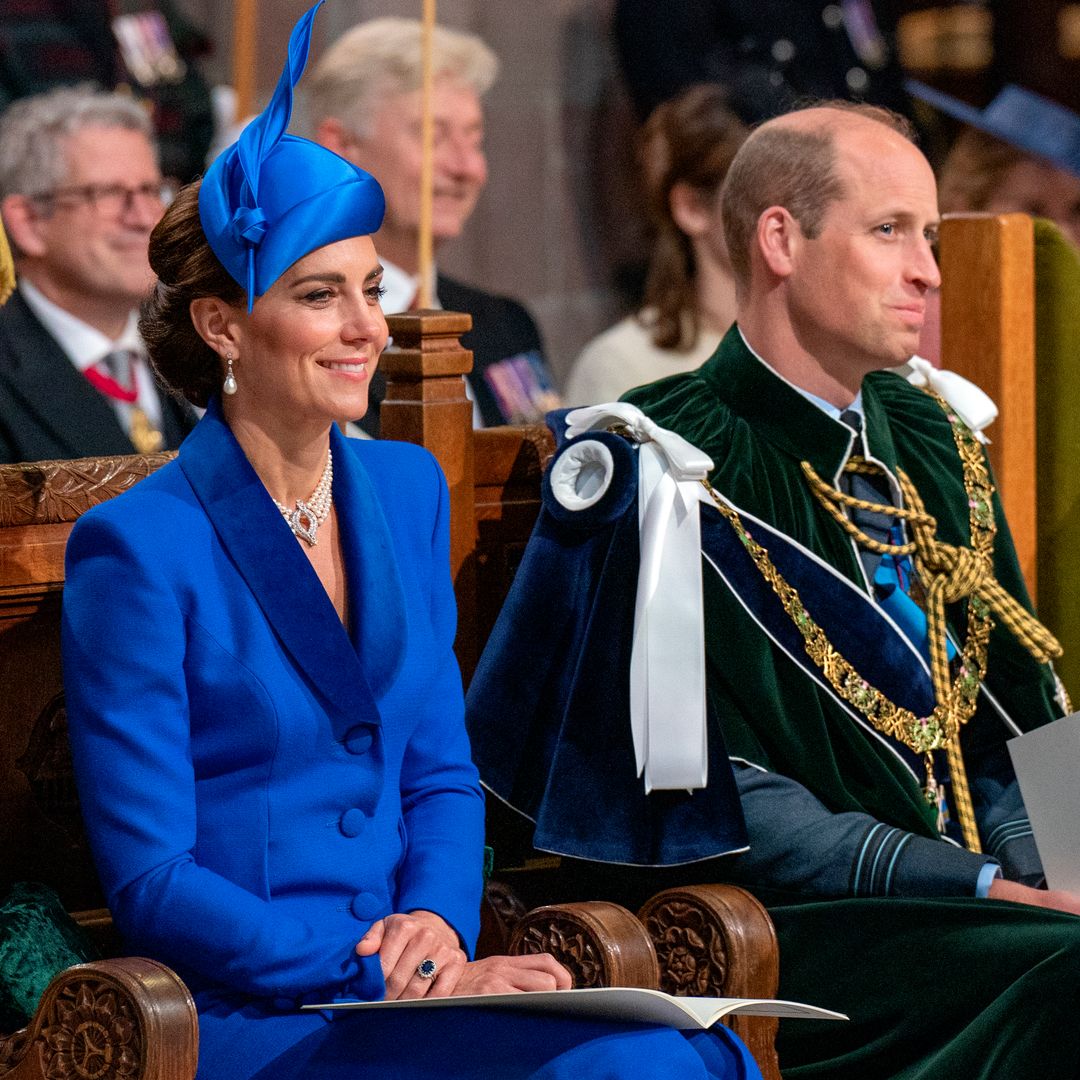Whenever Prince George, Princess Charlotte and Prince Louis are spotted in public, they are usually accompanied by their doting parents, the Duke and Duchess of Cambridge. But when you are as busy as Will and Kate, it helps to have an extra pair of hands – and their amazing nanny Maria Teresa Turrion Borrallo is never far away.
Always discreet and immaculately dressed, Maria trained as a Norland Nanny at Norland College, the prestigious childcare providers who cater to Britain's elite. Maria is responsible for making sure the royal tots are always on their best behaviour and ensures royal functions can be enjoyed without a hitch. But while Maria may make it look easy, HELLO! can reveal just what it takes to become a nanny fit for the royal family.
Maria Teresa Turrion Borrallo is never far from her royal charges
Becoming a Norland Nanny
To become a Norland Nanny you'll need to undertake a three-year full-time BA (Hons) degree in Early Years Development and Learning. Modules include Promoting Health and Wellbeing, Making Sense of Children's Behaviour and Working with Families and Communities. Nannies can also opt to take on a fourth year of study after the three-year degree – the prestigious Norland Diploma – during which they'll learn Communication in Practice, Food and Nutrition, Health and Wellbeing, Play and Learning, and Sewing.
MORE: Royal children and their beloved nannies through the years
What qualities will you need?
If you think you can handle the training, it might be worth checking you have the qualities needed before you start. Amongst many traits, nannies need to be loving, kind, honest, creative, hard-working, responsible and organised. They also need to be ready for anything as Prince George, Princess Charlotte and Prince Louis regularly prove!
The nannies have two uniforms including a formal one for events
The additional skills you'll learn
As well as theoretical and practical skills, Norland students are given the professional skills required to work with children, including good timekeeping, team-working, excellent communication skills, respect for and love of children. Norland College's value-added curriculum also includes self-defence classes, security and cyber-security training, emotion coaching, sleep and behaviour, a wellbeing osteopath workshop, baby massage, water safety and skid pan driving – that's learning how to control a car in a terrifying skid scenario.
MORE: Amanda Holden just wore the ultimate wedding guest outfit
Looking the part
The Norland uniform has been worn by nannies since 1892 and includes both a formal uniform to be worn for college lectures and events and a practical uniform to be worn for practical training and placements. For female students, the formal uniforms consist of a dress and shrug as well as hat and gloves. Nanny Maria has been spotted wearing the school's official uniform before at official family events. For male students, the formal uniform consists of a jacket, shirt, tie and trousers. The practical uniform consists of dark blue trousers, navy jumper and a light blue polo shirt.
Top 5 summer activities that Norland College recommends
Being a Norland nanny also means being ultra-creative when it comes to playtime. If you're struggling to keep the kids entertained this summer, read on for Norland College's guaranteed fun activities...
Make a bug hotel - A 5* bug hotel may sound a little wriggly, but Norland College says creating a home for bugs in the garden can help encourage natural-nurturing skills. "Collect little twigs, leaves, old cardboard tubes and plastic or broken terracotta plant pots," they tell us. "Stack them up (the more layers the better!), leave in a quiet corner of the garden and watch the bugs move in!" They even suggest investing in a butterfly raising kit to encourage further nurturing. Why not pair with a read of The Hungry Caterpillar?
Find a fossil - Like the Duke and Duchess of Cambridge, you needn't worry if your home is far from the beach during the summer months. According to Norland College, all you need is a sandcastle mould and some salt dough. "Fill a sandcastle mould, or any moulds you have that would make suitable fossils, with salt dough and toys, and then bake the resulting dough shapes," they told us. "Once it's fully cooled, place it underneath sand in the garden or in a sandpit and use garden forks, old spoons and toothbrushes to completely uncover the ancient sandcastle or prehistoric fossils!"
Make a summer scrapbook - To keep hold of their summer memories, Norland Nannies encourage children to scrap book all their favourite moments. "Ask the children to choose a scrap book – a plain paper book ready to fill with summer adventures," they advise us. "Encourage older children to write a piece about their day and younger children could use a disposable camera to take lots of pictures. Children can illustrate their journals with drawings, photograph captions and stick in small treasures, while younger children can decorate their photographs with stickers, different materials, and paint. This is a great way to ensure that older children keep up their writing and language skills in the holidays too!"
Go on a treasure hunt - For the ultimate treasure hunt, Norland College advises making a list of treasures for children to find, asking them to place things such as a brown leaf, a yellow flower, or a stick shaped like a man, into a bucket of their own. "Once they have found everything on their list, they come back in a circle and show everyone what they have found. You can treasure hunt in different locations to see if you can find a variety of treasures. You can make the treasure hunt as simple or as detailed as appropriate to the ages of the children. It's also a great way to develop language and observation skills."
Try an ice-age excavation - Norland Nannies even keep kids cool by helping them freeze their small animal toys, or other everyday objects such as, "pebbles, shells, leaves and flowers," in ice cube trays or containers with water. "Once they're frozen, children will love to excavate them using a range of various age-appropriate tools (spoons, masher, paint brushes etc.) to try and break them free! You could extend development for older children by talking about the science of freezing."
For more info on how to enrol as a Norland Nanny, visit norland.ac.uk.
Make sure you never miss a ROYAL story! Sign up to our newsletter to get all of our celebrity, royal and lifestyle news delivered directly to your inbox.


